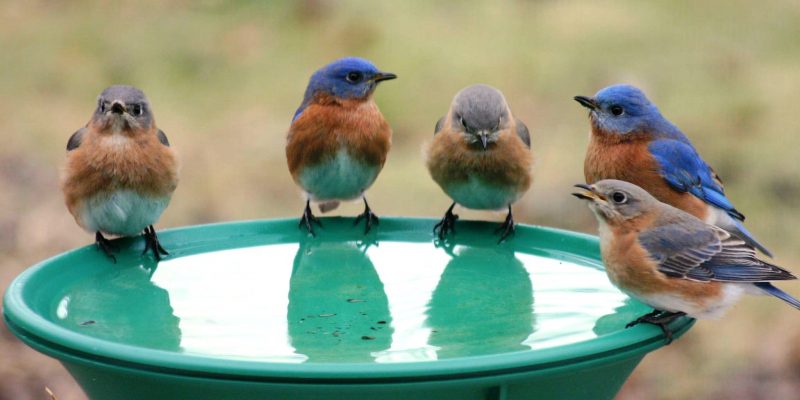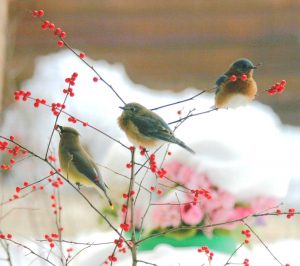
There’ll be bluebirds over
The white cliffs of Dover
Tomorrow just you wait and see
There’ll be love and laughter
And peace ever after
Tomorrow when the world is free.
Some of you will recognize this popular World War II song made famous by Vera Lynn (now 98) in 1942. It was written before America had joined the war, to lift the spirits of the Allies at a time when Nazi Germany had conquered much of Europe and was bombing Britain.
The music was written by Walter Kent with lyrics by Nat Burton, American songwriters, but there’s just one problem with it: there never were any bluebirds in Europe. The Eastern Bluebird, as well as the Western and Mountain Bluebird, is indigenous to North America.
Then there’s this line from “Winter Wonderland”:
“Gone away is the bluebird”
That was written in 1934. Eighty years ago bluebirds pretty much left the northeast in winter. Now, Tom Lake, compiler of the Hudson River Almanac comments, “They light up the winter sky. In my lifetime they have gone from being a sometimes sighting to a common occurrence in specific habitats.” Many migrate, but others stay put.
While many songbirds are endangered because of loss of forest habitat, the bluebird prefers open country, and usually nests in cavities or birdhouses near the edge of fields. Bluebirds increased in number as forests were cut in the early 1900s, but declined sharply in the mid-1900s because of the widespread use of pesticides and competition for nest sites from house sparrows and starlings.
Today, bluebirds have made a significant comeback primarily because of conservation management, including the popular use of bluebird houses. They are often seen in Gardiner through the winter months, frequently coming to bird baths, and to feeders for mealworms. Heated bird baths are available on line from many sources, and dried mealworms can be bought at Agway.
Their song is distinctive and can be heard by googling “eastern bluebird song youtube.” A rather low pitched, warbling song of several phrases, it is fairly easy to remember and you may hear the bird before you see it. Come spring, you may be tempted to build or buy a birdhouse yourself. Wooden ones do not age well; the synthetic Audubon house is a better choice, and be sure to check bluebird specifications; the hole size is especially important to prevent entry from house sparrows and starlings.
In the meantime, look around. That flash of blue could make your winter day!
